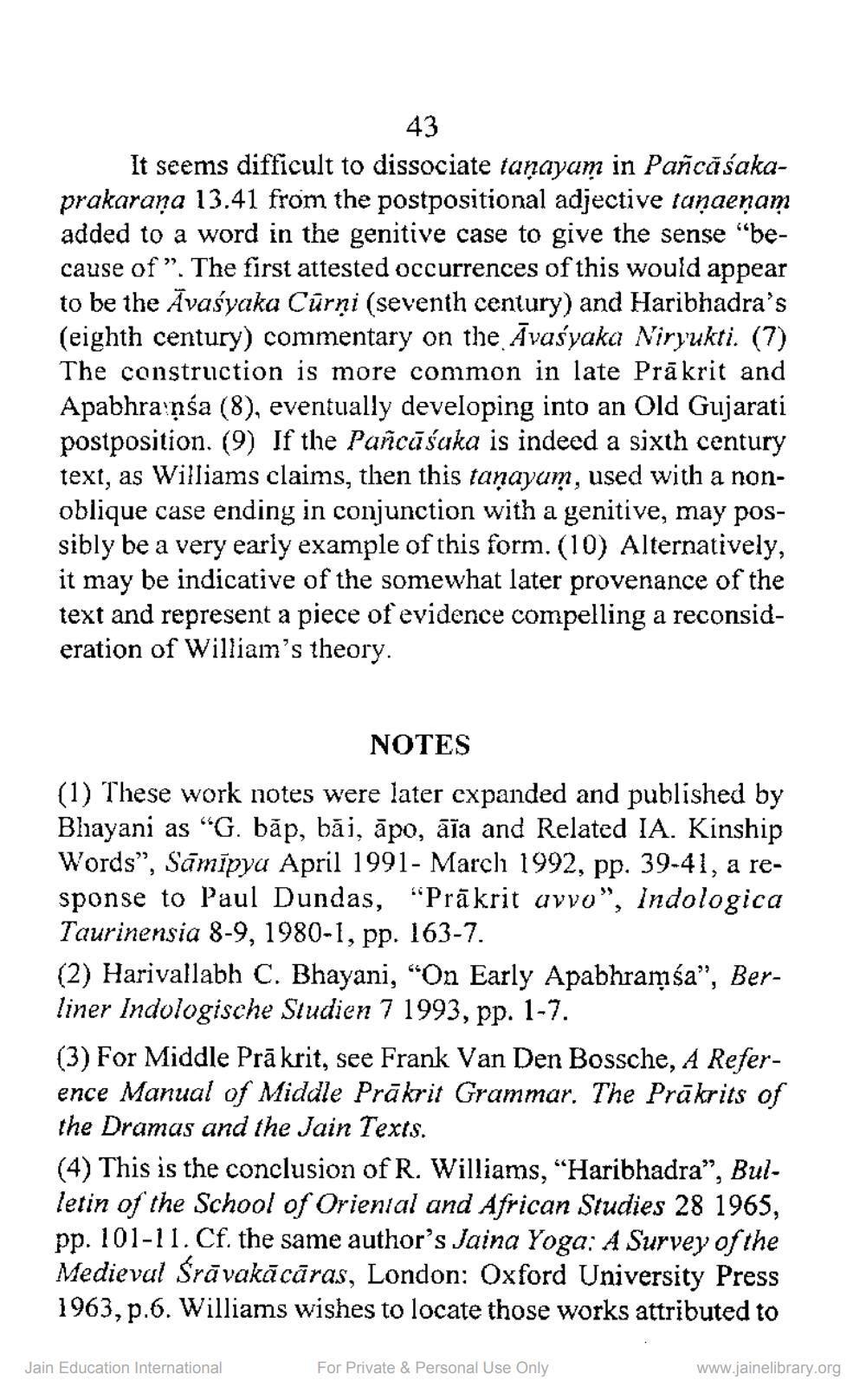________________
43
It seems difficult to dissociate tanayam in Pañcăsakaprakarana 13.41 from the postpositional adjective tunaenam added to a word in the genitive case to give the sense "because of ". The first attested occurrences of this would appear to be the Āvasyaka Cúrņi (seventh century) and Haribhadra's (eighth century) commentary on the Avasyaka Niryukti. (7) The construction is more common in late Prākrit and Apabhra ņśa (8), eventually developing into an Old Gujarati postposition. (9) If the Pancāśaka is indeed a sixth century text, as Williams claims, then this tanayum, used with a nonoblique case ending in conjunction with a genitive, may possibly be a very early example of this form. (10) Alternatively, it may be indicative of the somewhat later provenance of the text and represent a piece of evidence compelling a reconsideration of William's theory.
NOTES (1) These work notes were later expanded and published by Bhayani as "G. băp, băi, āpo, āsa and Related IA. Kinship Words”, Samipya April 1991- March 1992, pp. 39-41, a response to Paul Dundas, "Prākrit avvo", Indologica Taurinensia 8-9, 1980-1, pp. 163-7. (2) Harivallabh C. Bhayani, “On Early Apabhramsa”, Berliner Indologische Studien 7 1993, pp. 1-7. (3) For Middle Prā krit, see Frank Van Den Bossche, A Reference Manual of Middle Prākrit Grammar. The Prākrits of the Dramas and the Jain Texts. (4) This is the conclusion of R. Williams, "Haribhadra”, Bul. letin of the School of Oriental and African Studies 28 1965, pp. 101-11. Cf. the same author's Jaina Yoga: A Survey of the Medieval Srāvakācāras, London: Oxford University Press 1963, p.6. Williams wishes to locate those works attributed to
Jain Education International
For Private & Personal Use Only
www.jainelibrary.org




